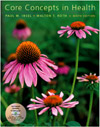Table 21-1 (See p. 602 in your text.) Use of Complementary and Alternative Therapies in the United States Statistics on the use of CAM in the United States are available in the following
research studies: http://jama.ama-assn.org/issues/v280n18/abs/joc80870.html
Eisenberg, D. M., et al. 1998. Trends in alternative medicine use in the United
States, 1990-1997. Results of a follow-up national survey. Journal of the American
Medical Association 280(18): 1569-1575. http://www.nejm.org/content/1993/0328/0004/0246.asp
Eisenberg, D. M., et al. 1993. Unconventional medicine in the United States--Prevalence,
costs, and patterns of use. New England Journal of Medicine 328(4): 246-252. For updates and additional information, visit the Web site of the http://nccam.nih.gov
National Center for Complementary and Alternative Medicine (NCCAM) or search
for recent research articles at http://www.ncbi.nlm.nih.gov/entrez
PubMed. | 


 2002 McGraw-Hill Higher Education
2002 McGraw-Hill Higher Education